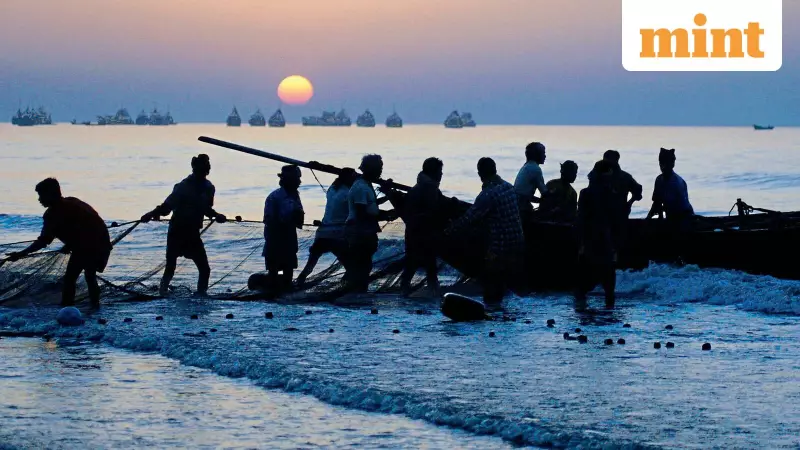
In a significant move to harness the vast potential of its oceanic resources, the Indian government has notified the Sustainable Harnessing of Fisheries in the Exclusive Economic Zone (EEZ) rules. This policy shift is designed to empower millions of fishermen and their cooperatives, marking a new chapter for India's blue economy.
Boosting Fishers and Cooperatives
The new regulations, notified on 4 November, explicitly prioritize fishermen cooperative societies and Fish Farmer Producer Organizations (FFPOs) for undertaking deep-sea fishing operations. This strategic focus aims to boost the entire fishing sector, enhance export earnings, and ensure sustainable practices. The initiative is set to benefit approximately 5 million fishermen across 13 coastal states and Union Territories.
The rules are particularly crucial given that countries like Sri Lanka, the Maldives, and Indonesia have been successfully harvesting significant quantities of high-value species like tuna in the Indian Ocean. India's EEZ spans a massive 2.3 million square kilometers—an area extending up to 200 nautical miles from the coast—which remains largely underutilized by Indian vessels.
Safeguarding Small-Scale Fishers and Enhancing Security
A core objective of the new framework is to protect the interests of small-scale fishers. To achieve this, the rules mandate a National Plan of Action to combat illegal, unreported, and unregulated (IUU) fishing. In a major boost for both safety and traceability, the use of electronic transponders on vessels has been made compulsory.
Furthermore, the identification of fishermen and their boats will be strengthened through the mandatory use of QR-coded Aadhaar cards and fisher ID cards. These measures are expected to significantly aid agencies like the Indian Coast Guard and the Navy in bolstering coastal security. The rules also clarify that fish caught in the EEZ will be treated as of Indian origin when brought to port, which will help in proper recording of catches and increasing export revenues.
Comprehensive Support and Infrastructure Development
The government has pledged comprehensive support across the entire value chain. This includes facilitating overseas exposure visits, capacity-building initiatives, and access to affordable credit through flagship schemes like the Pradhan Mantri Matsya Sampada Yojana and the Fisheries and Aquaculture Infrastructure Development Fund (FIDF).
To build essential skills, the central government will provide training to traditional fishers, cooperatives, and FFPOs for deep-sea fishing, value-chain efficiencies, and managing advanced vessels. A key innovation being introduced is the mother-and-child vessel concept, where a large, technologically advanced mother vessel supports smaller child vessels during extended deep-sea expeditions. This is expected to be particularly beneficial in the Andaman & Nicobar Islands and Lakshadweep, which together account for 49% of India's EEZ area.
Digital Access and Protecting Domestic Interests
In a firm stance to protect domestic fishers, foreign fishing vessels are not permitted to operate in India's EEZ under any arrangement. For Indian vessels, the process is being streamlined through a fully digital system. Mechanized and large-sized motorized vessels can obtain a required access pass free of cost via the ReALCRaft portal.
Traditional and small-scale fishers using motorized or non-motorized craft are exempt from this requirement. This integrated digital system ensures end-to-end traceability and enhances the global competitiveness of Indian marine products. Currently, about 238,000 fishing vessels are registered on the government portal.
While the new notification is a positive step, industry experts like Alex K Ninan, Vice President of the Seafood Exporters Association of India, point out that India still lacks a sufficient fleet of modern deep-sea fishing vessels to fully tap the EEZ's potential. With marine product exports having risen to ₹64,708 crore in FY24—nearly double the figure from FY14—these new rules are poised to unlock further growth by promoting sustainable deep-sea fishing.





